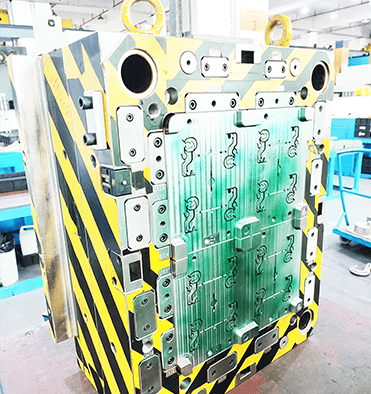Unleashing the Power of Insert Mold: Revolutionizing Manufacturing with English
Introduction
In today’s fast-paced world, innovation and efficiency are essential for businesses to stay competitive. Among the many manufacturing techniques that have emerged in recent years, insert molding has proven to be a game-changer. This article will explore the power of insert mold and its role in revolutionizing manufacturing processes.
What is Insert Mold?
Insert molding is a manufacturing process that combines multiple materials into a single molded part. It involves placing pre-formed components, or inserts, into a mold cavity and then injecting molten material around them. The inserts can be made of various materials such as metal, plastic, or even electronics, and they can serve different functions within the finished product.
Advantages of Insert Mold
1. Enhancing Product Design and Functionality
Insert molding allows for the creation of complex and intricate designs that would be otherwise impossible. By incorporating various inserts, manufacturers can enhance the functionality and performance of their products. For example, in the automotive industry, insert molding is commonly used to integrate metal inserts into plastic parts, creating a stronger and more durable final product.
2. Cost and Time Savings
By combining multiple manufacturing steps into a single process, insert molding significantly reduces production time and costs. Traditional manufacturing methods often require separate operations for assembling components, resulting in increased labor and assembly costs. Insert molding eliminates the need for assembly, streamlining the manufacturing process and reducing overall production costs.
3. Improved Product Quality
Insert molding ensures precise placement and bonding of the inserts within the mold, resulting in superior product quality. This technique eliminates the possibility of loose or misaligned components, reducing the risk of product failure. Additionally, the use of inserts can reinforce weak points in the product, improving its structural integrity and durability.
Applications of Insert Mold
1. Electronics and Electrical Components
Insert molding has become increasingly popular in the electronics industry. It allows for the integration of electronic components, such as sensors, connectors, and circuits, into plastic housings. This not only reduces the overall size and weight of the electronic devices but also enhances their durability and functionality.

2. Automotive Industry
The automotive industry has also embraced the power of insert molding. It is commonly used for manufacturing various automotive parts, including interior trims, switches, knobs, and connectors. Insert molding offers improved design flexibility, durability, and cost-effectiveness for automotive manufacturers.
3. Medical Devices
Insert molding plays a crucial role in the production of medical devices. It allows for the integration of metal inserts, such as surgical tools or imaging components, into plastic parts. This ensures precision, reliability, and biocompatibility, making insert molded medical devices a preferred choice for healthcare professionals.
Conclusion
Insert molding has disrupted traditional manufacturing processes, enabling businesses to create innovative, high-quality products while reducing costs and production time. Its versatility and scalability make it an ideal choice for various industries, including electronics, automotive, and medical devices. As technology continues to evolve, the power of insert mold will continue to revolutionize manufacturing, driving advancements and transforming the way products are made.
முந்தைய:China Injection Crate Mould: Creating Efficient and Durable Storage Solutions
அடுத்தது: What are the Key Steps and Importance of Precision in Crafting Quality Home Appliance Molding Parts?
-
Crafting the Perfect Plastic Beer Crate Mold: Expert Techniques and Strategies
2023-6-9
When it comes to producing plastic beer crates, the quality of the mold you use can make or break your product. A well-c...
விபரங்களை பார் -
Low Weight Plastic Injection Chair Mould
2023-6-18
Plastic injection molding is a widely used manufacturing process in the industry, and the demand for plastic products is...
விபரங்களை பார் -
Creating Efficient Plastic Chair Injection Molds for Optimal Production
2023-6-21
Plastic chairs are a common sight in homes, offices, and public spaces. They are lightweight, durable, and affordable, w...
விபரங்களை பார் -
சீனா வீட்டு உபயோகப் பொருட்கள் மோல்டிங் பாகங்கள்
2023-4-27
Home appliance molding parts are crucial components that are used in various household appliances. These parts are desig...
விபரங்களை பார் -
Injection mold making: Precision processes shaping the future of industry
2024-12-31
In modern manufacturing industry, injection mold manufacturing occupies a pivotal position. From plastic products in dai...
விபரங்களை பார் -
Creating Precision Parts with Injection Molding
2023-4-17
Injection molding is a manufacturing process used to create precision parts at a large scale. It involves injecting molt...
விபரங்களை பார்







